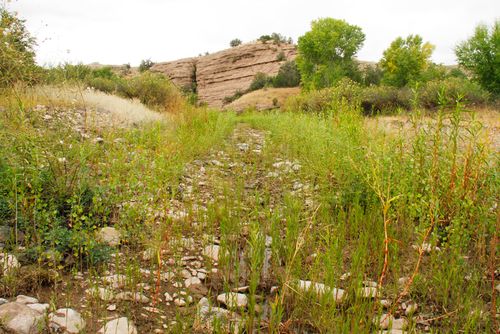
SWAP Habitat
Warm Desert Lowland Riparian Shrubland
NVC Name
Warm Desert Lowland Freshwater Shrubland, Meadow & Marsh (M076)
SWAP General Vegetation Type
RIPARIAN WOODLANDS and WETLANDS
Warm Desert Lowland Riparian Shrubland
[M076] occurs primarily in the Chihuahuan
Desert, High Plains and Tablelands, and
Madrean Archipelago ecoregions. This habitat
type is characterized by a mix of phreatophyte
species including Emory’s baccharis (Baccharis
emoryi), mule-fat (B. salicifolia), silver
buffaloberry (Shepherdia argentea), and coyote
willow (Salix exigua). On drier sites, honey
mesquite (Prosopis glandulosa) or velvet
mesquite (P. velutina) may dominate. As
phreatophytes, the shrubs tap into groundwater below the streambed. Vegetation is dependent
upon annual rise in the water table or annual/periodic flooding and associated sediment scour
for growth and reproduction. A dense understory layer of graminoids and forbs can be present
on moist-mesic sites and can include woolly sedge (Carex laevivaginata), Torrey rush (Juncus
torreyi), slender rush (Juncus dudleyi), hairy willowherb (Epilobium ciliatum), smooth horsetail
(Equisetum laevigatum), rough bugleweed (Lycopus asper), threesquare bulrush (Scirpus
pungens), and field horsetail (Equisetum arvense).
This habitat occurs along perennial and intermittent streams, lake or playa edges, and alkaline
seeps and springs in lowland floodplains of wide valleys, but may extend into montane reaches
up to 2,140 m (7,020 ft) in elevation. Stands are generally found on depositional side or island
bars that are frequently flooded. As stands mature and bars accumulate additional sediments,
bars are flooded less often, even as little as every 25 years. Occasionally, stands develop in
backwater channels and around ponds. Soils are typically poorly developed in recent
sediments. This habitat is often an early successional stage to Southwest Riparian Forest
[M036] and Great Plains Floodplain Forest [M028].
